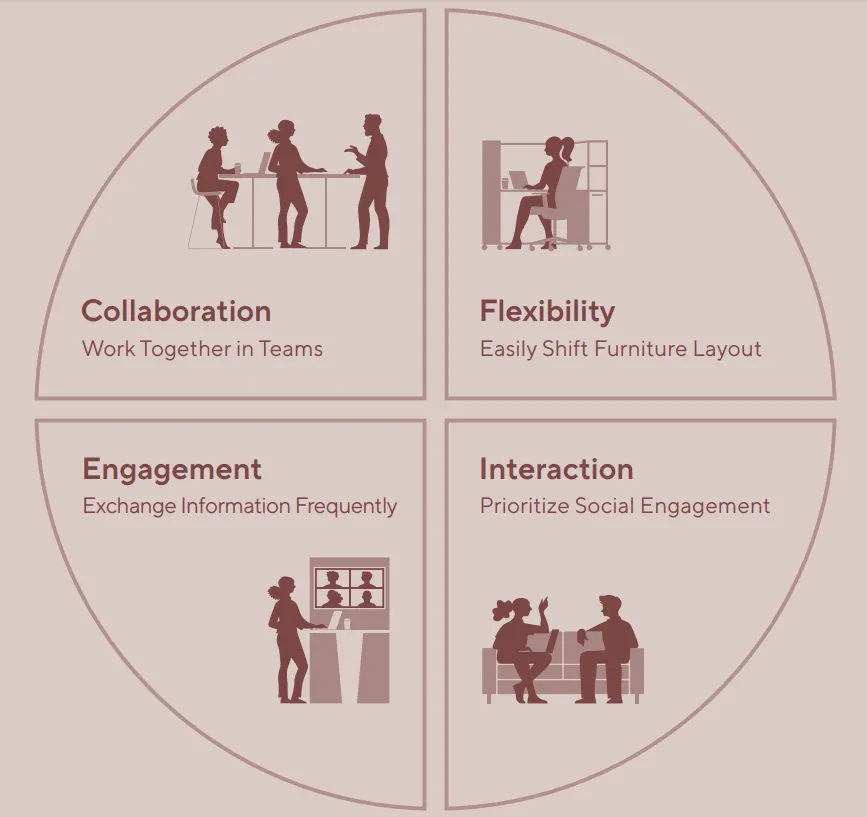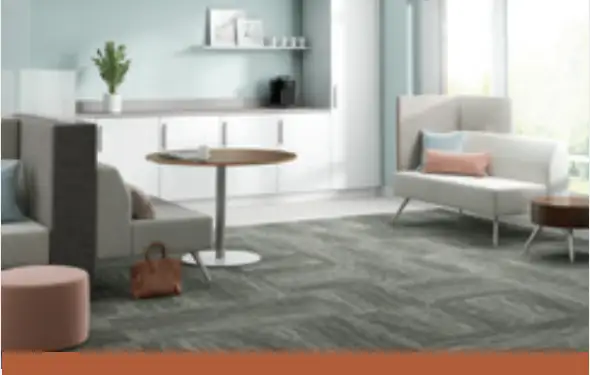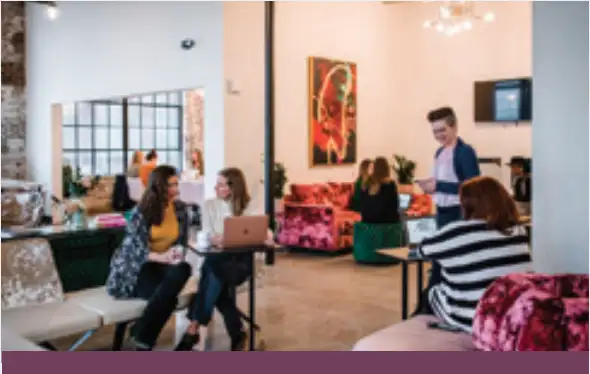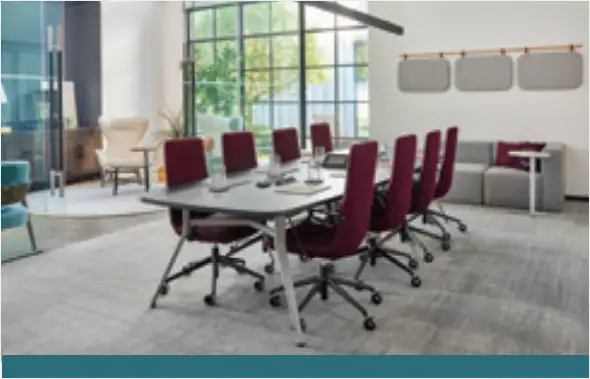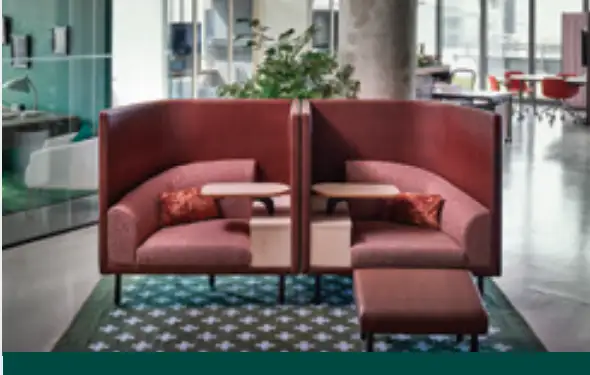Creating Spaces that Cultivate Community
Every workplace has its own unique culture that shapes how its employees interact and work together. Company cultures can vary significantly from organization to organization, with each culture reflecting unique characteristics, values, and beliefs that influence an employee's sense of belonging. Among Kimball International’s five identified culture types, the Collective culture distinguishes itself by placing a high value on customer satisfaction and embracing a collaborative, flexible work style as a means to achieve this goal. By understanding the distinctive characteristics of the Collective culture, we can design workspaces that support its collaborative ethos and adaptive approach, creating an environment that cultivates meaningful interactions and a sense of belonging for all.
Understanding the Collective Culture
The Collective culture values strong relationships and active participation, recognizing each employee's contribution potential. At the heart of this culture lies a "we're all in this together" mindset, often found in young start-ups and small businesses. The Collective culture’s shared commitment to success often results in a work environment that is more fluid and less bound by traditional structures. Known for its adaptability, this culture prioritizes a dynamic and collaborative work environment and typically promotes hybrid work schedules.
Collective Culture Traits
Space Design Considerations
Creating workspaces that enhance the Collective culture's community mindset and align with its dynamic nature involves the thoughtful consideration of workspace settings and sensory design elements. This includes the application of functional and adaptable furniture, the incorporation of biophilia to promote well-being and visual elements that spur creativity, the provision for partial visual and acoustic privacy to support focused work, and the inclusion of socializing spaces and shared common areas to foster a sense of community.
The Value of Human Centered Design
1. Kimball International, Understanding the Evolving Workplace Study, 2022
2. O.C. Tanner Institute, Global Culture Study, 2023
3. Kimball International, Workplace Assessment on Culture & Belonging, 2024
4. Gensler, Global Workplace Survey Comparison, 2023
The Role of Space Types Within the Collective Culture
Kimball International’s research uncovered six pivotal space types that are crucial for cultivating a thriving workplace and elevating a sense of belonging. Specific to the needs of the Harmonizer culture, the space types can be prioritized in the following way:
Space Ratio Suggestions for the Collective Culture
Room on the Move
Room on the Move spaces intentionally do not have a fixed layout or furniture placement, making them highly adaptable. Movable furniture solutions make it easy for teams to shift and transition from one activity to another, fostering a dynamic and collaborative work environment. This space type is ideal for the Collective culture as it allows for various functions, including mentoring, learning, and training, reflecting this culture's flexible and hands-on approach.
Well + Good
Well + Good spaces are dedicated areas that prioritize employee well-being and safety. This supports the Collective culture's focus on engagement and understanding that employee well-being is crucial to their productivity and creativity. Incorporating areas like yoga and meditation spaces, mother's rooms, and other quiet, distraction-free zones can provide a safe space for employees to recharge and refocus, creating a balanced work environment that fosters a more motivated and loyal team.
Culture Café
Culture Café spaces are essential to defining an organization's brand while also serving as designated gathering spots for interaction. Offering diverse seating options for meetings and meals, these areas create a positive employee experience, allowing people to come together, share ideas, and build stronger relationships. Culture Café spaces help develop camaraderie among employees who work collaboratively, supporting the shared responsibility and team-oriented mindset that characterizes the Collective culture.
The Meet-Up
Meet-Up spaces designed to support both physical and virtual collaboration cater to the Collective culture's emphasis on dynamic, team-based interactions and hybrid work schedules. These spaces enable employees to stay engaged and connected, no matter their location or role.
The Hub
The Hub serves as the central gathering point in the office, offering an open, multi-functional place to informally collaborate or comfortably socialize. It promotes a sense of cohesiveness within the Collective culture, providing an organic way to spark conversations and interactions. The relaxed environment encourages community, enhancing teamwork by enabling employees to develop stronger relationships and a shared sense of purpose.
Work Your Way
Work Your Way spaces support a range of workstyles and are designed to provide users with workspaces that align with their preferences and needs in the moment. While much emphasis is placed on team and group-based collaboration within the Collective culture, there is still a need to accommodate individual heads-down work. Work Your Way spaces often offer options for visual and acoustic privacy, making them perfect for focused work and impromptu meetings.
Creating Places to Belong
Creating the optimal work environment for the Collective culture involves a purposeful combination of workspace types that facilitate social interaction, open collaboration, and flexibility. By integrating these space types, organizations can create dynamic workspaces that amplify teamwork and creativity, which is crucial for ensuring customer satisfaction. This thoughtful ratio of spaces nurtures an environment where individuals feel connected, inspired, and prepared to contribute to shared success, fostering a greater sense of belonging within the Collective culture.

